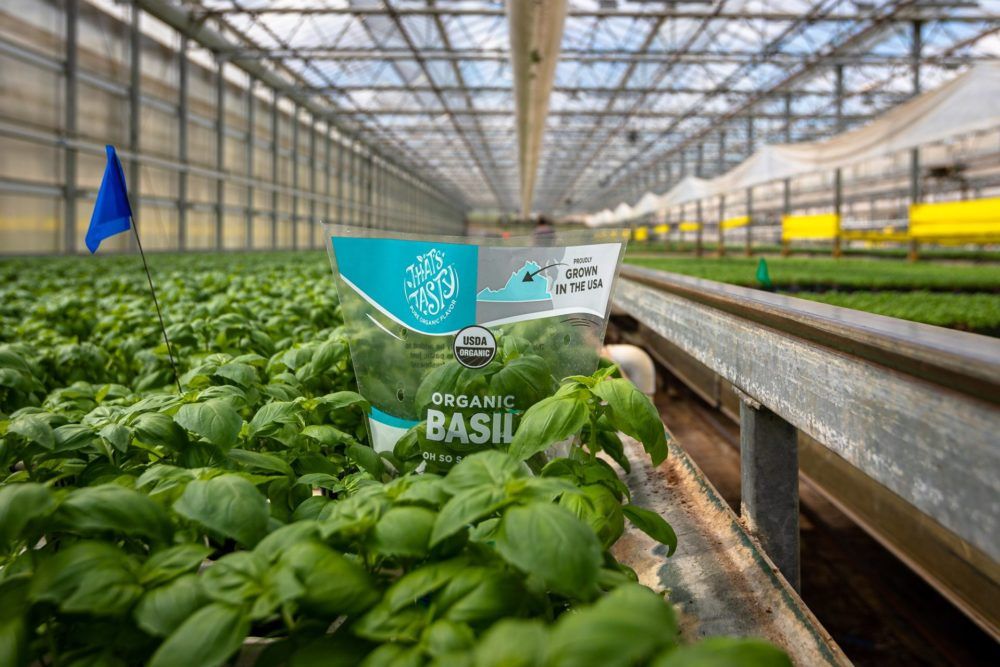Shenandoah Growers, a Virginia, US-based indoor farming company, has rebranded as Soli Organic and struck a $120 million financing arrangement with real estate development firm Decennial Group. The two companies say this is one of the largest deals of its kind between a real estate investment firm and a controlled environment agriculture (CEA) grower.
Soli Organic was founded back in 1989 and currently has 35% of the US market for herbs. For a number of years, the company has been transitioning its growing systems from outdoors into greenhouses and latterly into indoor farms using vertical farming technologies and methods. The big differentiator for Soli Organic’s vertical farms is their continued use of soil as the main growing substrate; vertical farms typically operate hydroponically (water-based) or aeroponically (air or mist-based).
Soli Organic calls its soil-based vertical farms “BioFarms” and currently operates seven of them with plans to build an additional eight aided in part by the financing from Decennial Group. This will shift 90% of Soli Organic’s production fully indoors.
The company sells six varieties of lettuces, 33 different herbs, and some purées and potted plants. Its products are all Certified Organic by the US Department of Agriculture and are in more than 20,000 stores nationwide across the US. The deal with Decennial Group will significantly scale its capacity and distribution.
The move indoors
The economics of vertical farming have been debated for years with many vertical farms — Bowery, AeroFarms, and Kalera to name just a few — investing millions of dollars into technologies that could help to bring down costs over the long term compared to outdoor and greenhouse-grown produce. Soli Organic believes it’s hit on the sweet spot taking the best of outdoor and greenhouse inside, bringing down costs for both the company and the consumer.
The company says it is able to get higher, more predictable yields in a shorter amount of time than would be possible in an outdoor field or a greenhouse. Its unit costs for organic produce rival outdoor field production and are “considerably lower” than those of any other indoor farm company, and its operations can be much closer to stores, lowering overall transportation and cold storage requirements.
For example, Soli Organic president Phil Karp told AFN that Soli Organic grown herbs cost on average $2 per pound less than those grown in a field. A spokesperson for Soli Organic noted that “savings are between 20% and 50% depending on the variety [of crop] moving indoors.”
Some of the reasons Soli Organic’s indoor farms are superior to greenhouses and outdoor fields include the ability to maximize yields on a per square meter basis and the company’s unique approach to how it manages its airflow, with automated fans that can simulate wind and operate vertically, Karp told AFN in the summer.
“We have a very specific approach to space and we use every square meter to grow,” he said.
Soli Organic also uses more common technologies like energy-efficient LEDs and a recycled water system. These technologies mean the facility needs fewer inputs to grow healthy plants, while some automation saves on labor costs.
Growing plants in soil — versus using hydroponics, the go-to method for indoor farming — is also motivated by cost; some of the company’s core IP is in its soil blend, which enables the closed-loop production and treatment of nitrogen (for fertilization) using simple bacteria, which Karp called a “breakthrough” in the precise delivery of nutrients to the crops. The press release announcing the deal says: “Its use of soil has enabled Soli Organic to achieve very low unit costs for organic produce, rivaling most outdoor field production and considerably lower than any other indoor – and non-organic – agriculture company.”
The Decennial Group financing will support the construction of three of the eight new planned facilities. Each of the 100,000-square-foot farms will have an annual production facility of 5 million pounds, according to Soli Organic. The company has already broken ground of the first facility, located in South Carolina, and plans to have it operational by the second quarter of 2022.




